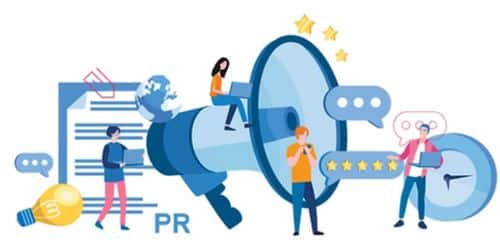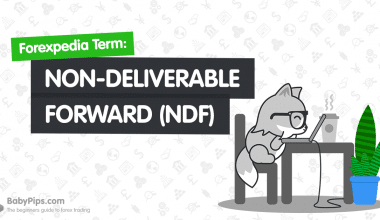Publicity is the process of letting the public know about a person or group. However, the goal of publicity is to get more people interested in a product or service by making it look better in the eyes of the public. This article talks about the types and purposes of publicity. It also talks about publicity marketing and liability insurance.
How Does Publicity Work?
From the French word “publicité” comes the English word “publicity” (advertisement). Also, in the heart of Paris, where shopping, tourism, and entertainment met commercialized print media and a thriving publishing industry, publicity as a practice was born.
Publicists are in charge of getting people interested in a certain subject. However, publicists, who are also called press agents, work on behalf of their clients to talk to the media and make public statements.
Publicists use social media marketing to get more clients and form strategic partnerships with other businesses. Publicity stunts, which are planned events meant to get the media’s attention, are another common way to get people’s attention.
A publicist’s job is to build and manage publicity for a brand, product, business, or famous person by getting the media to talk about the subject in a positive way.
However, publicists look for interesting things about businesses and services, like speeches, interviews, comments, or social work done by brand representatives, ambassadors, etc., and pitch those ideas to media outlets.
Companies don’t have to pay for traditional forms of advertising to get attention, but they do have to put in some effort. Publicists use a wide range of techniques to come up with news stories about brands. Among these are:
#1. Public Statement
You can write a press release, which is a short, interesting story written in a certain way, to let local media outlets know about important events or business news. However, it could be about the company’s general news, a new product launch, an event, or an authoritative stance on an issue.
#2. Networks
Publicists and PR pros build relationships with members of the press in order to get their clients’ brands more attention in the media.
#3. Digital Media
More and more businesses are using digital marketing methods such as the following social media marketing to attract customers and the media.
The Reason for Publicity
The main goal of publicity is to make more people aware of a product or service in the hopes of improving its reputation, making it more popular, or changing people’s minds about it. Other than this, publicity is meant to:
#1. Make Your Brand Known
The goal of public relations is to get the word out about a company or product by showing the general public what the company or product stands for. However, this can be done through trusted sources like the media, blogs, and thought leaders. Also, this helps the company’s brand grow in a natural way.
#2. Remove Misunderstanding
Misconceptions and wrong ideas about a company can hurt its reputation and bottom line in a big way. Also, public relations work is done to clear up these misunderstandings and keep the firm’s reputation in good shape.
#3. Interest and Demand Should Be Sparked
When information about a product gets to the right people in a natural way, it piques their interest and drives up demand.
There are some things that commercials can’t tell you. However, publicity is often used to get the word out about things like this.
More About Publicity
Some of the following things that make up publicity are:
#1. Form That Doesn’t Need to Be Paid For
When something gets publicity, it is pushed without anyone having to pay for it. The media coverage has come up on its own.
#2. Driven by the Media
Information needs to spread like wildfire, and the media are also the ones who can make that happen.
#3. Not Being in Charge
The brand has no control over when consumers engage, what they engage with, how they engage, or through what channels.
#4. Tries to Appeal to the Most Number of Readers Possible
Targeted advertising is different from getting more exposure. The shotgun method of telling many people about something is emphasized.
#5. Credible
Publicity is seen as more trustworthy by the people it’s meant for because it uses trusted channels like news outlets.
#6. Short-Sightedness
As a form of advertising, publicity is used to get the word out about one-time events or products.
Types of Publicity
Companies can choose from a number of the following ways to get publicity about what they do.
#1. News
Getting information out there by being in any major news source.
#2. Helping Others
Companies that use charity and community events to get the word out about their goods and services.
#3. Partnerships
By teaming up with more well-known brands, one can make it easier to promote their own brand. The partner will get just as much out of the success of the flagship brand.
#4. To Participate in Online
Brands share a wide range of content on their social media pages, such as Twitter, LinkedIn, Facebook, Instagram, etc., including photos, videos, and other visuals.
#5. Conferences
Business conferences are good for brands because they give them a chance to meet investors and other leaders in their field.
#6. Offers
Offering customers something unique and interesting is a surefire way to get their attention.
#7. Emergency
Most of the time, companies that help out end up on top because people talk about them.
#8. News Stories
Press releases are often used by businesses to get the word out about their name and products.
#9. Announcing the Launch of a New Product
When big companies in a field come out with a new product or service, they usually get a lot of attention from the media.
How Important Publicity Is
Here are some of the following ways that publicity helps a company be successful and have a good name:
#1. Helps People Trust You More
Publicity, unlike advertising, is meant to make people more aware of a brand as a whole. In this way, a brand’s credibility is increased when information about it comes from a neutral or independent source that people trust.
#2. Advertising That Works Right Away
Thanks to the internet and social media, brands can now get their messages to as many people as quickly as possible. Also, you can start a trend or a hashtag, and you’re all set.
#3. Cost-Effective
Publicity can be a great way to get people to know about your brand, and if you do it right, it can save you money compared to more traditional forms of advertising and promotion.
#4. Makes and Sends Out a Lot of Information
Ads and other traditional ways to promote a brand don’t have much depth. Publicity, however, in the form of word-of-mouth, videos, journals, news articles, and viral marketing, is a great way to teach people more.
#5. A Big Group of People
Many people hear about something through advertising in the media. For example, to get more people to know about your business, you could run ads in well-known media outlets or on popular blogs, vlogs, or channels.
Publicity in Marketing
In advertising, publicity is the process of letting people know about a product, service, person, or group (company, charity, etc.). It can also mean making public information about where it came from. Also, this is usually done through the media. However, publicity campaigns can be used to help people, businesses, non-profits, and creative projects.
In today’s competitive market, getting known is just as important as making a good product. Companies spend a lot of money on different kinds of advertising, such as sponsorships, ads, social events, and so on. On the other hand, all of these are paid ways to get the word out.
When making a marketing strategy, one of the main goals is to build better relationships with the public. Many businesses choose publicity as their public relations strategy because it is a very cheap (or even free) way to get the word out about their brand.
Publicity Categories
The following are the categories of publicity below;
#1. Positive
One definition of “positive publicity” is when something happens that makes people like and trust a company’s brand more. When publicity stunts fail, they usually fail spectacularly. When they work, it’s because they were well-planned and carried out.
#2. Negative
When more coverage and attention cost the organization money, this is called negative publicity. Every piece of news or event that doesn’t turn out the way people wanted it to can bring about bad press. When a person or business is in the news for the wrong reasons, it can hurt any other brands or products that they are connected to.
People can also see publicity as:
#3. Planned Publicity
Publicists and PR teams work together to make sure that partnerships and tie-ups for publicity, like interviews, product placements, campaigns, and more, are set up correctly.
#4. Unplanned Publicity
Even if a company doesn’t try, it can still get attention from the public. It could be set off by a news story or something said in an interview. We often hear that something has “gone viral” these days because social media makes so much information available. Also, many things can come together to bring attention to a certain person, group, or event. Once again, they can be helpful or harmful.
Right to Publicity
The right to publicity protects a person’s privacy and sense of self-worth by letting them choose who can make money off of using their name, likeness, or other information that can be used to identify them.
The right of publicity is a new area of law that is similar to trademark law. It could also affect business owners who have built their names around certain products. However, a person’s right to publicity keeps others from making money off of their name, likeness, or other ways to tell who they are, like a nickname, alias, voice, signature, likeness, or photo.
Even though federal unfair competition law recognizes a parallel statutory right to protection against fraudulent endorsement, association, or affiliation, neither federal law nor case law in the United States recognizes the right of publicity.
Still, the right to publicity is recognized by most laws and/or legal precedents. States have many different ideas about whether or not the right to publicity can be passed down or inherited, and how long it can be kept after death.
Find Out More
Outside the U.S., rights that are similar to the right of publicity are sometimes recognized under different names and with different levels of protection. With the right kind of advertising and registration, the names and pictures of real people can also become trademarks.
That’s why some famous people have their names and/or pictures registered as trademarks. Also, right of publicity issues include lawsuits over copyright, privacy, and defamation.
Publicity Liability Insurance
Businesses should have public liability insurance coverage to protect themselves from people who might sue them for harm done to their bodies, homes, or things because of how the business works. The general public includes customers, tourists, and delivery people.
This kind of coverage comes with all commercial property insurance policies (BOP). You may have heard of this type of insurance under a different name. It protects your business in case a customer gets hurt on your property.
Publicity liability insurance covers the costs of claims made by members of the public who were hurt because of something your business did. Publicity liability insurance takes care of the costs of paying out compensation.
- Personal injuries
- Loss of property or damage to it
- Death.
Policies vary by the insurance company, but in general, publicity liability insurance will protect you if:
- To events that occur at your place of business.
- Incidents that happen at events or activities put on by your company that are not on-site
Pros and Cons of Publicity
Like the other parts of the marketing mix, publicity can have both good and bad effects. To wit:
Advantages
Publicity is a powerful way to market a business because it can get the word out quickly. Some benefits are:
#1. Economical
When you have good publicity, the media and the public are interested in you for free. So, the only money the company has to spend is on planning and carrying out the stunt that will get their attention.
#2. Credible
Public relations is seen as more legitimate than paid forms of communication like advertising because it uses trustworthy sources like news organizations, influential people, and opinion leaders.
#3. Innovation
Do something unique if you want people to talk about your event, conference, or stunt. So, whenever a new idea comes out, the media always pay attention to it.
Publicity often spreads quickly, or “goes viral.” However, a publicity stunt, event, or action always goes viral at no cost to the brand.
Disadvantages
The following are some cons of publicity below:
#1. No One in Charge
When it comes to public relations, the brand has no control over how the story is told. In fact, it could hurt the reputation of the company.
#2. Results Are Not Guaranteed
There are times when publicity for an event may not be available. So, there is always a chance that all the money spent on preparations will have been wasted.
#3. Needs Special Knowledge and Work
The news doesn’t always ignore the bad things that happen. However, making something go viral takes a special set of skills and work.
What Is Publicity and Example?
The English word “publicity” comes from the French word “publicité.” It is the spreading of news and other media to a large number of people. People (like politicians and entertainers), businesses, non-profits, and creative works can all be used to get more attention.
What Are the Two Types of Publicity?
Publicity can be good or bad, depending on how the audience sees it.
What Is the Focus of Publicity?
Publicity can be done through news, press releases, event information, and other ways of getting the word out. Since the main goal of publicity is to get any kind of media coverage, that’s usually all it focuses on.
What Makes Good Publicity?
The following are;
- Think about where you live.
- Accept content made by users.
- Do something for free.
- Communicate with the media.
- Talk to people with a lot of power.
- Put out free versions of your product that people can try out.
- Make a statement for the press.
- Take an active role in local matters.
What Is a Publicity Process?
Publicity is not a step in the marketing process. Instead, it is the result of a well-executed public relations plan in which the company’s representatives are able to get positive information out to the media and other third-party channels (such as blogs, vlogs, podcasts, etc.).
How Do We Use Publicity?
Publicity is used to make more people aware of a person, their business, or their product. However, most of the time, a company’s ads will be aimed straight at the customers it wants to reach the most. Also, PR usually tries to reach a larger group of people. It is also common to follow marketing and advertising efforts with a push for publicity.
What Is the Difference Between Advertising and Publicity?
Publicity is what people say about a product, while advertising is what a company says about a product. Publicity is about building goodwill and trusts in the business, while advertising is about building an image for the business.
How Do You Attract Publicity?
You can through the following ways below;
- Do useful things with the people in your neighborhood.
- Tell people about the arrival of brand-new products.
- Make an interesting story and tell your stakeholders about it.
- Give us some numbers to make the piece more interesting.
- Expert commentary that newspapers can use.
What Is the Power of Publicity?
Getting the right kind of publicity can do a lot for your company’s reputation, public image, and ability to bring in new customers.
What Are the Primary Tools of Publicity?
The word “publicity” refers to a method used in public relations to get information to a large number of people that don’t involve personal contact. Most often, this is done through a news story. When we talk about a product’s publicity, we mean that it is getting a lot of attention.
Public relations (PR) methods include press releases, news conferences, and advertising. Sponsorships, product placements, and using social media are also great ways to get a lot of good press.
Conclusion
How well a business is advertised often affects what people think of it. The goal of publicity is to make more people aware of an organization or its services through different means of getting the word out. To increase the chances that a customer will interact with your business or buy your products, it is important to know how to get good press.
Publicity FAQs
What are the six rules of publicity?
- Identify your goals and the motivations behind them.
- Just take baby steps.
- Be engaging.
- Build something.
- Become a resource for others and strengthen bonds.
- Engage in post-publication activity.
Where does publicity come from?
When your firm receives publicity, it gains positive attention from the public. It may consist of both established media like television newscasts and print newspapers, and emerging ones like podcasts, online magazines, and social networking sites.
What does publicity aim to do?
The goal of public relations is to increase a target audience’s familiarity with, or trust in, an organization, product, or event by disseminating relevant information to the public. Publicity typically has a restricted scope due to its primary purpose of gaining any amount of media notice.
Related Articles
- Promotion strategy: Best easy practices and all you need (+ free pdfs)
- Marketing Skills To Boost your Sales.
- New Business Ideas 2022: The Ultimate List (+ 30 Quick Easy Tips)
- Home Business Ideas with Low Start Up Costs: Get the Top 20 Here (+ Easy Quick Tips)
- 2023 BEST WEBSITES FOR REAL ESTATE NEWS (Updated!)




